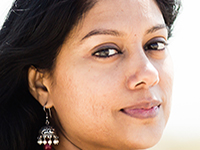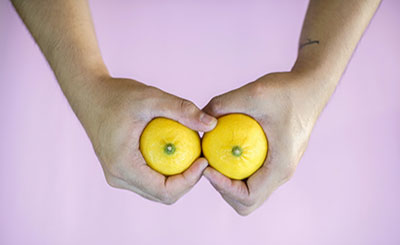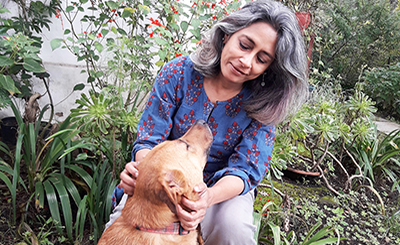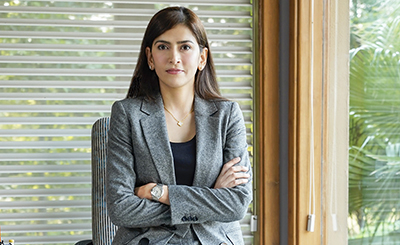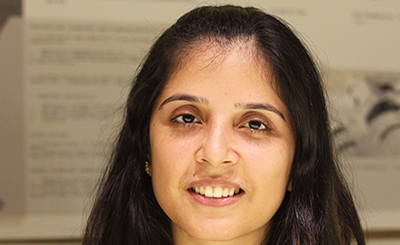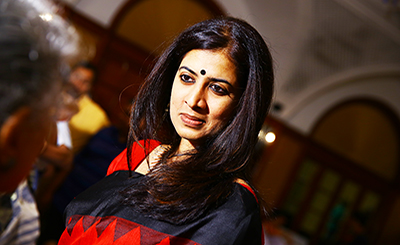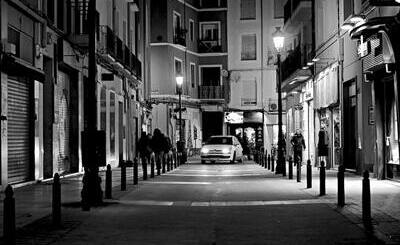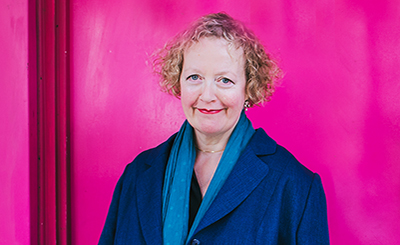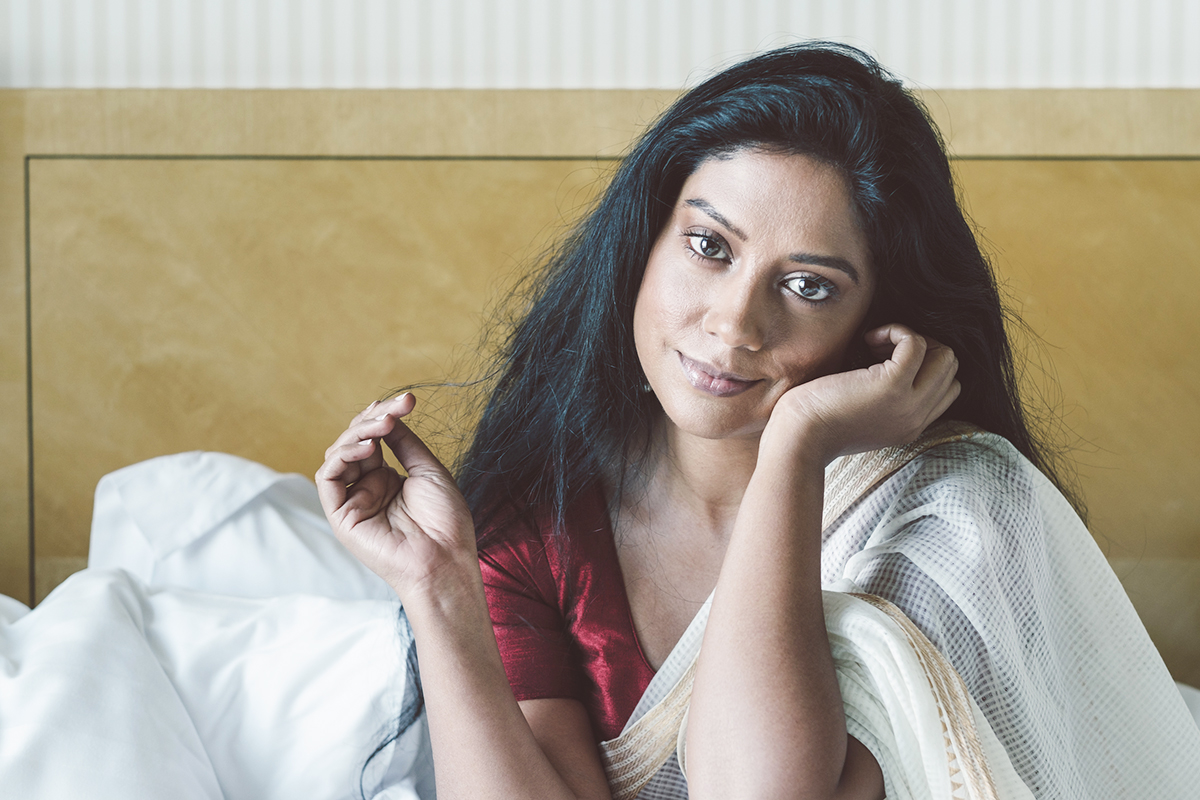
Shereen Saif, Dubai-based, India-born artist. Photos courtesy of Shereen
Artists have not one but many reasons to create. I perform and make art simply because I am compelled to do so. In the process of honoring this internal imperative, if I am able to grow, connect, provoke and inspire, that would be reward enough for me to keep walking this path, making honest choices.
“When I grow up, I want to be a doctor,” wrote seven-year-old Shereen in her class essay. Her ambition was fuelled by the prospect of getting to wear a white lab coat and dangling a stethoscope around her neck. That and wanting to be like her mother who was a doctor. By 17, her dream career had lost its glitter. And she proclaimed that architecture was her real calling. A perfect balance of science and art. This is where she was going to flourish, she thought. Fast-forward 19 years. A business degree, a career in the communications industry and a parallel career in performing arts. Life had taken some rather unexpected turns.
If you had asked me 20 years ago what I’d be doing 20 years from then, without batting an eyelid, I would have answered “Heading up an architecture firm”. Not only did that not happen, I landed up in careers that were not even remotely in my consideration set back then. Frankly, I could never have connected the dots from where I started to where I am today. Mine has been a non-linear career. But then again, when life is not linear, why should your career be?
The Reluctant Artist
Mark Twain once said, “The two most important days in your life are the day you are born and the day you find out why.” However, what he didn’t say is that the “why” is not something you stumble upon overnight or by chance. Finding one’s purpose is a deliberate, iterative and long-drawn-out process. It is discovered over time by going through life’s experiences. Which in turn may trigger thoughts about how one can positively make an impact. Or in Steve Jobs words, “Make a dent in the universe”.
I was introduced to Bharatanatyam when I was 10. It wasn’t love at first step. It was slow, difficult and to begin with, quite dull. But with my mother’s cajoling, I pursued it right through my school years. Classical dance taught me the importance of discipline and rigor. It cultivated grace, shaped my aesthetics and introduced me to the transformative power of storytelling. But it was a hobby and strictly so.
I grew up in a time when almost every middle-class Malayalee family ambitiously raised doctors, engineers and lawyers — nothing less. I was academically inclined so without much ado, I happily took the professional career route.
Then, in third year, something changed. My dissertation topic on Temple Theatres brought me face-to-face with the performing arts of Kerala. These close encounters triggered a deep passion to study classical dance again. This time for myself. And this time for art’s sake. My comeback to performing arts as a young adult raised many eyebrows within the family circle. But my parents kept it discreet and as long as I had a legit career, it was tolerated.
I went on to train in Mohiniyattam under Kalamandalam Sujatha and Dr Neena Prasad and Kathak under Pali Chandra. I was also performing widely, relishing every stage. Yet, for the longest time it continued to remain only a passion. I had a corporate career and I didn’t need art to pay my bills. I made a resolve that dance would be my escape, food for my soul. But then again, resolutions are made to be broken.
Owing It!
I worked a 9-6 job in a multi-national agency in Dubai and spent almost all of my spare hours fuelling my passion. I remember the times I would catch a flight to India on Thursday night, rehearse on Friday, perform on Saturday and fly back on Sunday morning to head straight to a meeting. I led an exhilarating double life but it was exhausting.
After breakdown, I realized it was impossible to continue like this so I took a step back to understand what I really wanted of life. I asked myself, “If money wasn’t a concern, what would I spend my days doing?” The answer was clear. Nothing satisfied me more than creating, performing and reaching out through art. I was an artist whether I liked it or not. I just had to own it and take whole-hearted responsibility for it.
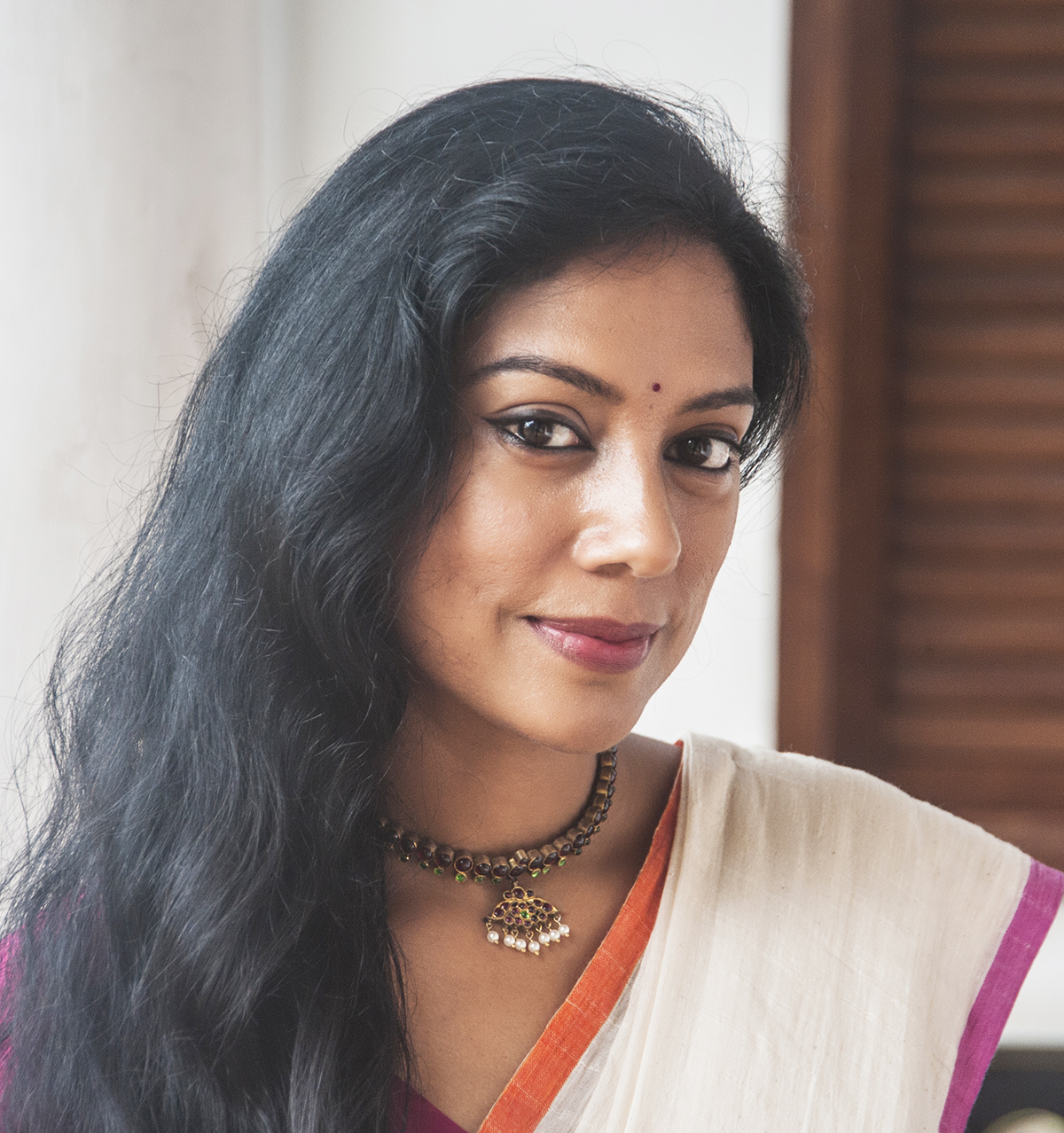
The first thing I did was quit my job and go solo. I would work for myself, on my own terms and spend more time building my performing arts career. This created ripples within the family circle and well-meaning members of the clan enquired how a career in performing arts would pay the bills whilst ensuring that I had all the trappings of a ‘successful life’. The problem is, as a society, we seem to have standardized measures of (material) success. Whereas in reality, success means different things to different people. Far and wide, I was the only artist in the family. I had to make my own path and define my own personal success parameters.
Purpose, Passion and Profit became my mantra. Why Profit? Because in the real world, money matters. If you cannot think creatively about how you can monetize your passion, it will not be sustainable in the long run. The corporate world taught me that.
Dance Was Not Enough
To specialize or diversify? Most would argue that it is better to be a master in one than a Jack of all. While there is merit in that argument, I have come to realize that spending time outside of your chosen specialism and having multiple interests forces you to think in novel ways. It exposes you to a variety of sources of inspiration that will enrich your thinking and ultimately the work you create. I would go the multi-disciplinary route.
My choice to explore theatre was a very conscious one. I was starting to feel limited as an artist. Classical dance as a medium was not enough for me to express in full the things I wanted to say. This is what led me to theatre over a decade ago; in a journey that began with Drama Dubai’s Desert Monologues. Over the years, I trained (and continue to train) in both Western and Indian theatre methods from Stanislavski to Navarasa Saadhana. My theatre sensibilities have been shaped by incredible artists, including Dubai-based theatre directors Liz Hadaway and Sol Abiad, Koodiyattam exponent Venu G., Actor and ex-Administrator General of Comédie-Française Marcel Bozonnet, Vinay Kumar and Nimmy Raphael — Artistic Directors of Adishakti and Film and drama director Suveeran.
People outside of theatre don’t realize how much goes into the making of an actor. One has to study the nuts and bolts of the craft and practice relentlessly to be able to consistently deliver believable performances and connect deeply with the audience. The magic in a performance doesn’t happen by accident. It is carefully crafted but the audience will never see the strings. And this applies across medium and genre.
Along my artistic journey, I have taken chances. And this has led to some happy realizations for the most part.
My foray into installation art was sparked by my association with Star Too, the UAE’s first experimental theatre project. In the period from 2011-2014, we worked on devising original, multi-disciplinary, multi-media theatre productions. Our creations always received mixed reactions. Some loved it, others referred to it as “interesting” and some others found it unpolished and vague. I carried these experiences forward and in 2014, I decided to experiment by creating my first immersive video art installation ‘The Unmanifested’ at Dubai Culture’s SIKKA Art Fair in collaboration with filmmaker Swapna Kurup. This set the ball rolling and I started creating a body of work combining movement, music, text, photography, video art and technology.
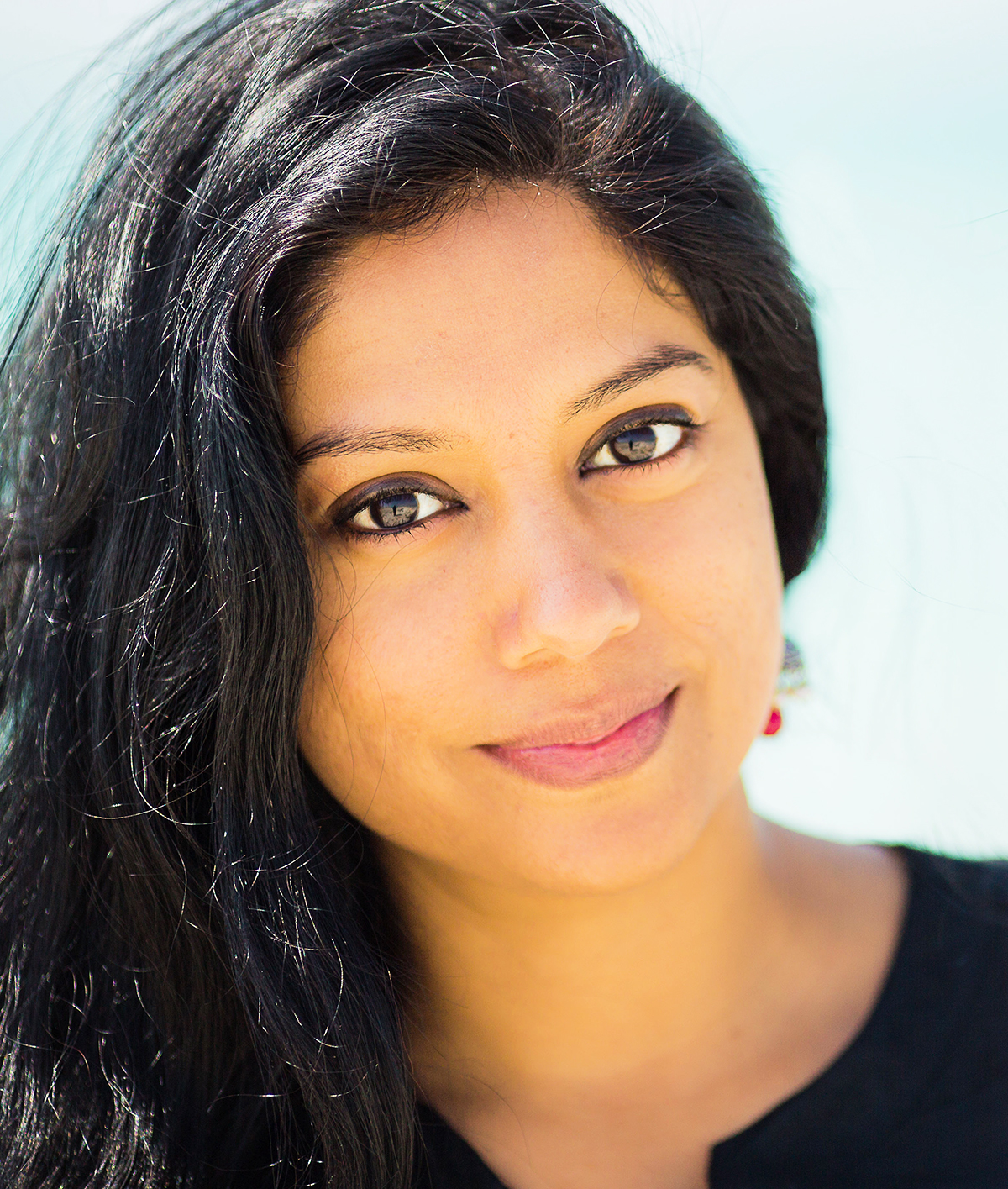
In 2017, a chance encounter with Italian master storyteller Paola Balbi led to the start of my adventure in storytelling. Prior to this, I had never heard of storytelling as a performative art. Storytelling was what my great grandmother did to entertain us during our summer holidays in Kerala. This completely changed for me that evening at Paola’s storytelling café as I watched how professional storytellers like her captivated the audience. Something else happened, she invited members of the audience to tell stories. As a classical dancer, I already had a repertoire of traditional stories from the Puranas, Mahabharata and Ramayana so when I stood up to perform, I spontaneously drew from what I already knew and told the story of Mahabali through words, music and dance. That was the moment I realized that I had always been a storyteller, this was only a different format.
I also realized that it was not enough to rely on instinct. So, I trained as a storyteller at Bangalore’s Kathalaya under veteran teller Geeta Ramanujam. I also came under the mentorship of Paola Balbi and more recently trained with Welsh storyteller Michael Harvey.
In a journey that began with dance and expanded into theatre, voice acting, installation art and storytelling, I sometimes wonder where I find myself. The answer is all of the above but I have to admit that my heart is in theatre.
Theatre has the power to suspend disbelief, to entertain, inspire, provoke and challenge notions both of ourselves and society. It teaches us to live truthfully in the given moment. To really listen, respond and know what it feels like to be in someone else’s shoes. There is nothing quite as self-improving and fulfilling as theatre. Today, I identify myself as an actor first. Theatre is where I find myself and lose myself many times over.
Losing My Religion
“Performing arts is haram (forbidden) in Islam.”
It is ironic that in spite of the various spiritual arts from qawwali to sama in Islamic societies and their obvious contributions to world dance, drama, and music, many Muslims staunchly hold on to the idea that such arts are forbidden.
Born into a Keralite Sunni Muslim family, I grew up in a moderately conservative environment. Yet I was taught dance, music and recitation as a child. It only became problematic when I took it on professionally as an adult, made complex even more by my gender. A Muslim woman practicing the arts invites far more criticism than her male counterparts in the field.
Although my parents disapproved initially, they made peace with it and over time, supported it. As did some dear members of my immediate family. The others don’t matter.
Although it is impossible for many people not to look at me as a Muslim woman artist, I hope to broaden their view. The only two labels I personally identify with are: artist and human.
My surname is Saifudeen. By assuming the stage name Shereen Saif, I was symbolically losing the religion (deen) in my name. Religion is a deeply personal matter between me and my creator. It has no place in my art practice.
Keep Walking
From conversation with self to building bridges with others. From a need to remember to a need to forget. From celebrating the ephemeral to celebrating the immortal. Artists have not one but many reasons to create. And personally, the reasons are unimportant.
I perform and make arts imply because I am compelled to do so. In the process of honoring this internal imperative, if I am able to grow, connect, provoke and inspire, that would be reward enough for me to keep walking this path, making honest choices.
This piece is part of The Women’s Issue, curated by Shireen Quadri
More from The Byword
Comments
*Comments will be moderated



